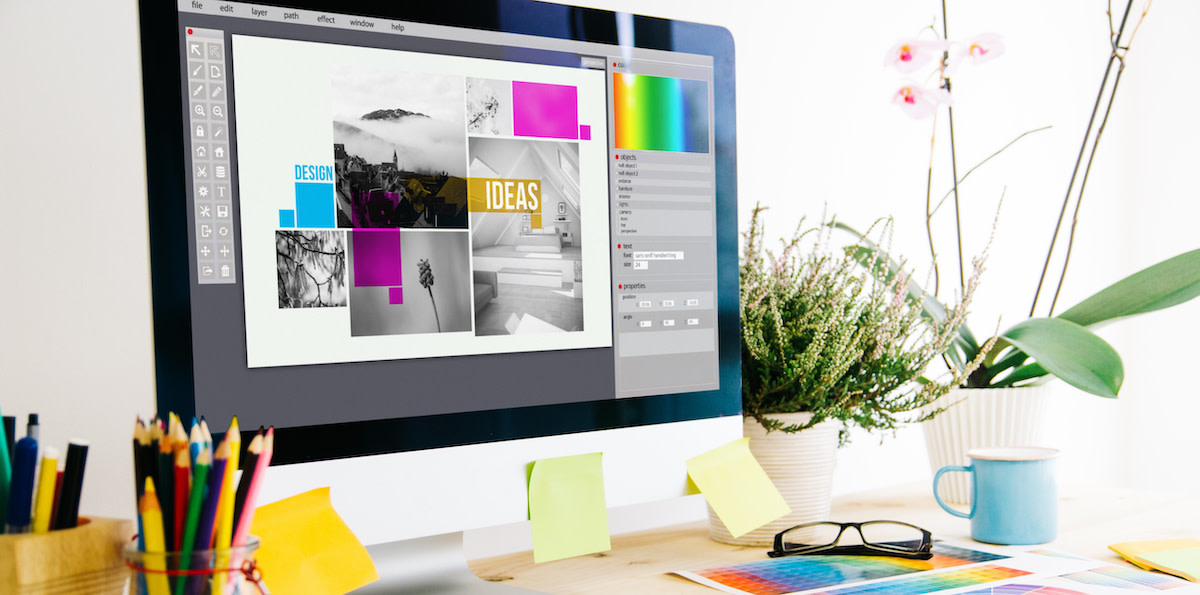Graphic Design Composition: 8 Graphic Design Elements
Written by MasterClass
Last updated: Jan 26, 2023 • 3 min read
A successful graphic design composition combines visual elements to communicate a clear message. Learn about the principles of design and the key elements of compelling graphic design compositions.
Learn From the Best
What Is Composition?
In fine art, filmmaking, photography, graphic design, and other visual mediums, composition speaks to the arrangement of design elements in a given canvas, image, or screen. The composition combines specific elements—such as color, texture, and positive or negative space—that offer a clear visual hierarchy, drawing attention to the central or various parts of the image.
What Is Graphic Design Composition?
Graphic design composition combines individual elements with a structure to communicate information effectively. Graphic designers can use the basic principles of composition to make ads, website designs, and other marketing materials to build an effective brand positioning strategy or marketing campaign. Using compositional principles gives visual weight to an image, telling the audience where to look, what to read, and how to feel.
In addition to eye-catching graphic elements to communicate a message, there must be cohesion within the details, so audiences clearly understand the graphic and its goal. Graphic designers often work in apps such as Adobe Creative Cloud to establish a visual hierarchy and strong composition for graphic design projects.
8 Components of Graphic Design Composition
Several different elements are the building blocks that combine to make a good composition. The most important elements include:
- 1. Color palette: One of the most striking elements of your design, color helps establish a mood for your composition. When light waves strike an object and reflect back to the optic nerve in a human’s eyes, the sensation they perceive is color. Artists and designers use color to depict and describe the subject and to portray mood, light, depth, and point of view. Designers use the color wheel and the tenets of color theory—a set of guidelines for mixing, combining, and manipulating colors—to create color schemes.
- 2. Form: The way a shape or physical configuration occupies space is form. Instead of creating form through a three-dimensional physical shape, designers create the appearance of form on a flat surface by using light, shadow, the formation of an object’s contours, empty space, and surrounding objects.
- 3. Line: Line refers to the way that two points in space connect. Diagonal, vertical, or horizontal lines can direct the eye toward a certain point in your composition. Designers can employ lines to create a symmetrical or asymmetrical balance in designs.
- 4. Shape: A shape is a two-dimensional area with a surrounding outline. Graphic artists can use elements, including line, color, value, and shadow, to give a shape the appearance of a three-dimensional shape. There are three types of shapes: organic shapes, which occur naturally in the world; geometric shapes, which are angular and mathematically consistent; and abstract shapes, which represent things in nature but aren’t perfectly representative.
- 5. Space: Using space properly can help others view your design as you intended. White space or negative space is the space between or around the focal point of an image. Positive space is the space that your subject matter takes up in your composition. The spacing of your design is essential because a crowded design layout can overwhelm the viewer’s eye.
- 6. Texture: Designers use texture to express how an object (image or text) feels. Words to describe texture may be rough, ribbed, smooth, thorny, soft, and more. Texture can provide a sensory component to your design.
- 7. Typeface: Web designs, ads, and print materials often combine images and text. The kind of typography you use should stem from brand guidelines and be easily legible—and well-written—to create a compelling message.
- 8. Value: In design, value refers to the lightness or darkness of a color. The values of a color comprise gradients, a series of variations on one hue that range from the lightest to the darkest. Artists can use the various values of color to create the illusion of mass and volume in their work.
Want to Learn More About Tapping Into Your Graphic Design Genius?
Get a MasterClass Annual Membership and let David Carson be your personal tutor. The prolific and decorated designer—who’s been lauded as the “art director of the era”—reveals his processes for going off the (design) grid, implementing typography in new and interesting ways, innovative uses of photography and collage, and so much more.
